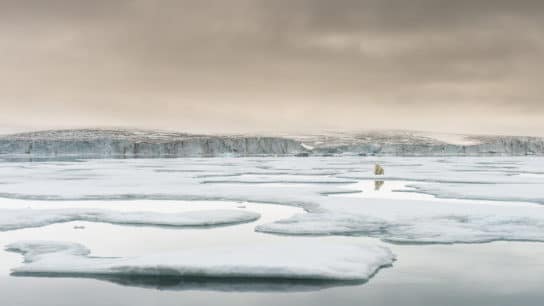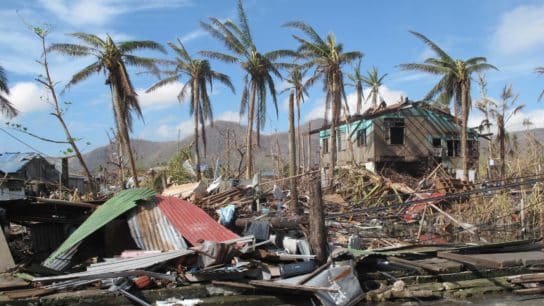This weekly round-up brings you key climate news from the past seven days, including the outcome of the 27th Commonwealth Heads of Government Meeting (CHOGM) and the latest study on the health risks associated with gas stoves.
—
1. Climate Change-Induced Atlantic Ocean Warming Fuelled Deadly Valencia Floods, Scientists Say
Torrential rains hit Spain’s eastern region of Valencia on Tuesday, unleashing catastrophic flooding that killed at least 198 people, with dozens still missing on Thursday. 500 millimeters (20 inches) of rain – a year’s worth for some locations – fell in just eight hours, trapping people in their homes and cars.
According to Climate Central, a non-profit news organization that analyzes and reports on climate science, the storm responsible for the unprecedented floods was fuelled by warmer-than-usual sea waters.
“The low-pressure system driving these historic floods tapped into an atmospheric river” – a long, narrow corridor of concentrated moisture in the atmosphere, the non-profit said on Thursday. It added that the atmospheric river was transporting excessive moisture it drew from the abnormally warm waters of the Tropical Atlantic, which exacerbated the intensity of the rainfall and contributing to the catastrophic deluge.

The elevated sea surface temperatures were made at least 50 to 300 times more likely by human-caused climate change, according to Climate Central.
Read more here.
2. Sinking Nations Should Keep Their Maritime Boundaries, Commonwealth Leaders Agree in First Ocean Declaration
Commonwealth nations on Saturday adopted their first Ocean Declaration as calls for from some of Britain’s former colonies for reparatory justice for the trans-Atlantic slave trade mounted.
The Apia Ocean Declaration was announced on the last day of the 27th Commonwealth Heads of Government Meeting (CHOGM), which took place in the Pacific island nation of Samoa. It calls on all 56 Commonwealth nations, 49 of which have a coastline, to protect the ocean in the face of severe climate, pollution and overexploitation.
In the declaration, Commonwealth leaders agreed that a nation’s maritime boundaries should remain fixed regardless of physical changes that may arise from sea level rise. In other words, the rights and economic benefits of vast fishing grounds continue to apply to these nations even if much of their population is forced to migrate as dry land is submerged.

The agreement mandates the protection of 30% of oceans and marine ecosystems restoration by 2030. It also calls for “urgently” finalizing the Global Plastics Treaty, ratifying the UN High-Seas Treaty, developing coastal climate adaptation plans and strengthening support for sustainable blue economies.
Read more here.
2. Snowless Mount Fuji Emerges as a Stark Symbol of Climate Change After Japan’s Hottest Summer
Since the establishment of Japan’s weather agency 130 years ago, Mount Fuji’s first snowfall has consistently been recorded in October. But on Wednesday, the iconic volcano’s slopes were notably snowless.
Yutaka Katsuta, a forecaster at Kofu Local Meteorological Office, told the AFP news agency that because of exceptionally warm weather this year, snowfall had yet to be observed on Japan’s highest mountain.
This summer, the hottest on record globally, was also Japan’s warmest since record-keeping began in 1898, matching the high set in 2023. Temperatures between June and August were 1.76C (3.1F) higher than the average and have remained unusually high in September, deterring cold air, said Katsuta.
Read more here.
3. Gas Stoves Linked to 40,000 Premature Deaths in EU and UK Annually: Study
Funded by the non-profit European Climate Foundation and published Monday, the study found that nearly 40,000 early deaths each year in the European Union and the UK can be linked to exposure to nitrogen dioxide from burning gas for cooking indoors. The same pollutant is estimated to be linked to 41,000 annual cases of paediatric asthma across the EU’s 27 member states and the UK.
Experts have repeatedly warned about the dangers of nitrogen dioxide exposure, which can intensify responses to allergens in allergic asthmatics and lead to respiratory conditions, decreased lung function growth in children, cardiopulmonary effects and even premature deaths. In the US, a study found that 12% of current childhood asthma cases can be attributed to gas stove use.
While some national and local governments, in Europe and elsewhere, have started exploring alternatives, natural gas is still widely used for cooking and heating around the world.
Read more here.
4. ‘Another Year, Another Record’: Planet-Warming Greenhouse Gas Concentrations Surged to Historic Levels in 2023, WMO Says
When the UN agency released its first assessment 20 years ago, carbon dioxide (CO2) concentrations stood at 377.1 parts per million (ppm). They have grown by 11.4% since, hitting a new record of 420.0 ppm last year.
Concentrations of methane (CH4) in 2023 were 1,934 parts per billion (ppb). Methane – a gas mainly associated with fossil fuel use, agriculture and waste – is the second major greenhouse gas after CO2, responsible for 25% of global warming. Meanwhile, concentrations of nitrous oxide (N2O) climbed to 336.9 ppb. Nitrous oxide is the third-most significant human-caused greenhouse gas.

Aside from the relentless burning of fossil fuels, emissions from wildfires likely contributed to the jump in emissions, which grew from 417.9 parts in 2022, according to the report. A study published in August in Earth System Science Data (ESSD) concluded that the total amount of carbon emissions generated from all fire events combined last year was 16% above average, totalling 8.6 billion tonnes of CO2.
Read more here.
5.
Read more here.














